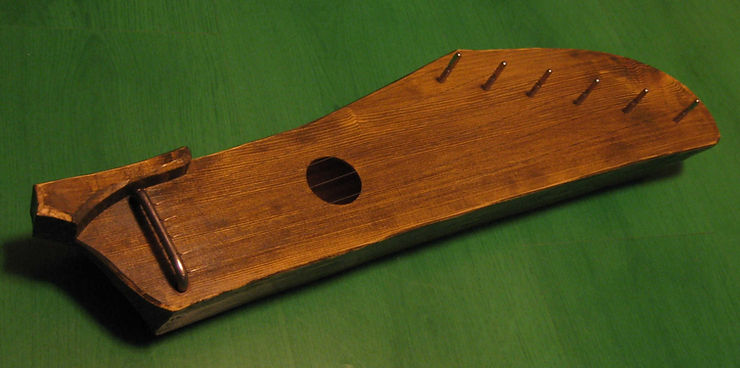The harpsichord is an instrument in the family of stringed keyboard instruments. It was developed in the 1400s and has been used as a popular instrument ever since.

Introduction to the Harpsichord
The harpsichord has two sets of strings that are plucked by a quill or plectrum, which is held between the thumb and fingers. The strings are stretched across a frame called the “harpsichord’s case”. When you press down on one of the keys, it will pluck one or more strings to make a sound.
The harpsichord was invented in the 16th century and became popular in the 17th century. The word “harpsichord” comes from the Italian words “cimbalo di cipresso” which means “cypress wood clavier.” The harpsichord is a keyboard instrument that produces sound by plucking strings with plectra.
The history of the harpsichord
Most likely developed in the late Middle Ages is the harpsichord. Italian harpsichord builders began producing light instruments with low-tension brass stringing by the 16th century. Beginning in the late 16th century, the Southern Netherlands adopted a new strategy, particularly under the leadership of the Ruckers family. With sturdier construction and greater tension steel treble stringing, their harpsichords had a more potent and distinct tone. The first harpsichords with two keyboards, used for transposition, were among them.
The harpsichords built in other regions in the 18th century were modeled after the Flemish instruments. The double keyboards were modified in France to operate various string choirs, resulting in a more musically adaptable instrument (known as “expressive doubles”). Among all harpsichords, those from the height of the French tradition, created by artisans like the Blanchet family and Pascal Taskin, are among the most admired and frequently utilized as models for newer instruments. The Kirkman and Shudi companies in England created complex harpsichords with a rich sound. By adding sixteen-foot and two-foot choirs, German creators like Hieronymus Albrecht Hass expanded the instrument’s sonic range; recently, these creations have served as models for contemporary creators.
Bartolomeo Cristofori created the first fortepiano around 1700. The early fortepiano uses percussion; the strings are not plucked but rather pounded with leather-covered paper hammers. The fortepiano gets its name from its ability to vary the dynamic volume. Contrary to the harpsichord, this. The harpsichord was replaced by the piano by the late 18th century and virtually vanished from popular culture for most of the 19th century; the exception being its ongoing usage in opera to accompany recitative, though the piano sometimes replaced it even there.
Instruments with heavy strings and metal frames that were inspired by piano technology served as the foundation for twentieth-century attempts to restore the harpsichord. Ideas regarding harpsichord construction experienced a significant shift beginning in the middle of the 20th century as builders like Frank Hubbard, William Dowd, and Martin Skowroneck worked to revive the Baroque era’s construction practices. The current scene is dominated by harpsichords constructed using this kind of historically informed building technique.
Famous pieces composed for the harpsichord
The harpsichord is an eye-catching instrument that was popular during the Baroque and Classic periods – until it was supplanted by a new creation, the fortepiano. Its popularity and use had expanded throughout Europe by the 1600s, and all great composers created compositions for it. Here is a compilation for you to appreciate, ranging from early solitary keyboard Italian compositions to more evolved ones with even varied temperaments.
- J. S. Bach: Goldberg Variations, BWV 988
- Giovanni Picchi: Danze et Toccata
- Louis and François Couperin
- Domenico Scarlatti: Sonatas K2, K213, K208
- J. S. Bach: Concerto for harpsichord no. 1 in D minor, BWV 1052
- Joseph-Nicolas-Pancrace Royer: La marche des Scythes
- G. F. Handel: Brockes Passion, HWV 48
- G. F. Handel: Aminta e Fillide, HWV 83: “E un foco que’l d’amore”
- L. v. Beethoven: Sonatas per il clavicembalo o piano-forte, no. 1, 8 & 14
- Harpsichordist Wanda Landowska
Harpsichord in the classical era
The majority of the traditional harpsichord repertoire was composed during the instrument’s first historical blooming, the Renaissance and Baroque eras.
Harpsichord music was written by two of the Classical era’s most important composers, Joseph Haydn (1732-1809) and Wolfgang Amadeus Mozart (1756-1791). For both, the harpsichord and clavichord played an important role in their early careers, and despite later encounters with the piano, they continued to play them for the rest of their lives. Mozart is said to have performed his final keyboard concerto (the “Coronation”) on the harpsichord.
However, with the introduction of the piano, harpsichords faced a formidable opponent by the middle of the 18th century and ultimately lost appeal to the piano’s mellower and more dynamic tone.
The revival of the harpsichord
The piano nearly entirely replaced the harpsichord throughout the 19th century. Composers drew back to the instrument in the 20th century as they looked for variety in the sounds at their disposal. The harpsichordists Violet Gordon-Woodhouse (1872–1951) and Wanda Landowska (1879–1959) in France were at the forefront of the instrument’s rebirth under the influence of Arnold Dolmetsch. Francis Poulenc (the Concert champêtre, written in 1927–1928) and Manuel de Falla both composed concertos for the instrument. The Double Concerto by Elliott Carter was written for harpsichord, piano, and two chamber orchestras. See Contemporary harpsichord for a thorough description of music written for the resurrected harpsichord.
#music #instrument #Musicalinstrument #harpsichord #baroquemusic #keyboard







